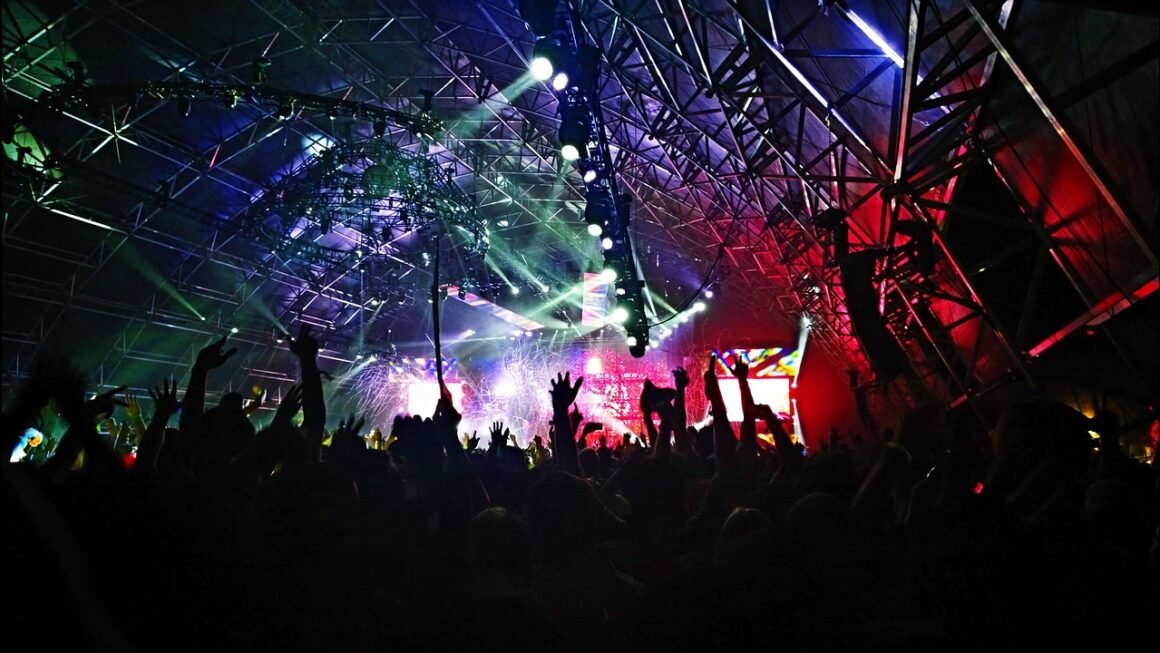Animation, a captivating art form that breathes life into still images, has revolutionized storytelling, entertainment, and even industries beyond the creative realm. From the earliest flipbooks to cutting-edge CGI, animation continues to evolve, offering limitless possibilities for visual expression and communication. This comprehensive guide delves into the world of animation, exploring its history, techniques, applications, and future trends.
The History and Evolution of Animation
Early Pioneers and Techniques
Animation’s roots can be traced back to the late 19th century, with innovators like Émile Reynaud and J. Stuart Blackton pioneering early techniques.
- Émile Reynaud: Developed the Praxinoscope, an improved version of the Zoetrope, allowing for longer, more elaborate animated sequences. His Théâtre Optique projected animations onto a screen, marking the first public presentations of animated films.
- J. Stuart Blackton: Created “Humorous Phases of Funny Faces” (1906), considered one of the earliest examples of drawn animation. He used chalk drawings and stop-motion techniques to bring his characters to life.
These early techniques, though primitive by today’s standards, laid the foundation for the animation we know and love.
The Golden Age of Animation
The mid-20th century saw the rise of major animation studios like Disney, Warner Bros., and MGM, ushering in the Golden Age of Animation.
- Walt Disney: Revolutionized the industry with groundbreaking techniques like cel animation and the multiplane camera, creating iconic characters like Mickey Mouse and producing full-length animated features like “Snow White and the Seven Dwarfs” (1937).
- Warner Bros.: Introduced memorable characters like Bugs Bunny, Daffy Duck, and Porky Pig, known for their witty humor and slapstick animation. Directors like Chuck Jones and Friz Freleng defined the studio’s distinctive style.
- MGM: Produced animated shorts featuring Tom and Jerry, a cat-and-mouse duo whose comedic antics captivated audiences for decades.
This era saw significant advancements in storytelling, character development, and animation quality.
The Digital Revolution
The introduction of computers in the late 20th century transformed animation, leading to new possibilities and techniques.
- Computer-Generated Imagery (CGI): Films like “Toy Story” (1995), the first fully computer-animated feature film, demonstrated the power of CGI, opening doors for more complex and realistic animations.
- Motion Capture: This technique allows animators to record the movements of real actors and transfer them to digital characters, creating more lifelike performances.
- Software Advancements: Software like Autodesk Maya, Adobe After Effects, and Blender have become industry standards, providing animators with powerful tools for creating high-quality animations.
The digital revolution has democratized animation, making it more accessible to independent filmmakers and artists.
Types of Animation Techniques
Animation encompasses a wide range of techniques, each with its own unique aesthetic and application.
Traditional Animation (Cel Animation)
This classic technique involves drawing each frame of the animation on transparent acetate sheets called cels.
- Process: Animators create key drawings, and in-betweeners fill in the frames between the key poses. The cels are then painted and photographed against a background to create the final animation.
- Examples: Disney classics like “The Lion King” and “Beauty and the Beast” utilized cel animation. While largely replaced by digital methods, the principles of traditional animation still influence modern techniques.
- Benefits: Allows for highly detailed and expressive character animation.
Stop-Motion Animation
Stop-motion involves manipulating physical objects in small increments between individually photographed frames.
- Process: Animators move puppets, clay figures, or other objects slightly and photograph each movement. When the frames are played back in sequence, it creates the illusion of movement.
- Examples: “Wallace & Gromit,” “Coraline,” and “The Nightmare Before Christmas” are famous examples of stop-motion animation.
- Types: Claymation (using clay figures), puppet animation (using puppets with armatures), and cut-out animation (using flat shapes).
2D Animation
2D animation involves creating animations in a two-dimensional space, often using digital software.
- Process: Animators draw or create characters and backgrounds digitally, using software like Adobe Animate or Toon Boom Harmony.
- Examples: “The Simpsons,” “Rick and Morty,” and many animated TV shows utilize 2D animation.
- Benefits: Cost-effective compared to 3D animation, suitable for stylized and expressive animation.
3D Animation
3D animation involves creating animations in a three-dimensional space using computer software.
- Process: Animators model characters and environments in 3D, then rig the characters with a skeleton and controls, allowing them to be posed and animated.
- Examples: Pixar’s “Toy Story,” DreamWorks’ “Shrek,” and most modern animated feature films are created using 3D animation.
- Benefits: Allows for realistic and complex animations, suitable for creating immersive worlds and characters.
Applications of Animation Across Industries
Animation is not just for entertainment; it has diverse applications across various industries.
Entertainment and Media
Animation is a staple in film, television, and video games.
- Animated Films: From Disney’s classic fairy tales to Pixar’s innovative stories, animated films continue to captivate audiences of all ages. The global animation market is projected to reach $642.53 billion by 2030.
- Animated TV Series: Animated TV series like “The Simpsons” and “Rick and Morty” have become cultural phenomena, showcasing the power of animation for storytelling and social commentary.
- Video Games: Animation brings characters and environments to life in video games, enhancing the player experience and creating immersive worlds.
Marketing and Advertising
Animation is an effective tool for marketing and advertising campaigns.
- Explainer Videos: Animated explainer videos can simplify complex concepts and engage viewers, making them ideal for product demos and educational content.
- Animated Ads: Animated ads can be more memorable and impactful than traditional advertising methods, helping brands stand out in a crowded marketplace. Studies show that animated videos increase brand recall by up to 70%.
- Social Media Content: Animated GIFs and short videos are popular on social media platforms, providing brands with a creative way to connect with their audience.
Education and Training
Animation can enhance learning and knowledge retention in educational settings.
- Educational Videos: Animated videos can make learning more engaging and accessible for students of all ages.
- Training Simulations: Animated simulations can provide realistic and interactive training experiences for employees in various industries.
- Interactive Learning Modules: Animated interactive modules can help students learn at their own pace and reinforce key concepts.
Scientific Visualization
Animation helps visualize complex scientific data and concepts.
- Medical Animations: Medical animations can illustrate complex biological processes and surgical procedures, aiding in education and patient communication.
- Architectural Visualization: Architectural animations can showcase building designs and urban planning projects, providing stakeholders with a clear understanding of the proposed structures.
- Scientific Simulations: Animated simulations can visualize climate change patterns, astronomical phenomena, and other complex scientific data.
The Future of Animation: Trends and Innovations
The animation industry is constantly evolving, with new technologies and techniques emerging all the time.
Virtual Reality (VR) and Augmented Reality (AR)
VR and AR are creating new opportunities for immersive and interactive animation experiences.
- VR Animation: VR animation allows viewers to step inside animated worlds and interact with characters and environments in a completely new way.
- AR Animation: AR animation overlays animated elements onto the real world, creating interactive and engaging experiences for users.
Artificial Intelligence (AI)
AI is playing an increasingly important role in animation, automating tasks and enhancing creativity.
- AI-Powered Animation Tools: AI-powered tools can automate tasks like in-betweening, lip-syncing, and motion capture, freeing up animators to focus on more creative aspects of the process.
- AI-Generated Content: AI algorithms can generate animated characters, environments, and even entire scenes, opening doors for new forms of animation.
Real-Time Animation
Real-time animation allows animators to create and render animations in real-time, significantly reducing production time.
- Game Engines: Game engines like Unreal Engine and Unity are being used to create real-time animated films and interactive experiences.
- Virtual Production: Virtual production techniques allow filmmakers to combine live-action footage with real-time animated environments, creating seamless and immersive experiences.
Conclusion
Animation continues to evolve, driven by technological advancements and creative innovation. From its humble beginnings to its current status as a global phenomenon, animation has transformed the way we tell stories, communicate ideas, and experience the world around us. Whether you’re an aspiring animator, a seasoned professional, or simply a fan of the art form, the future of animation promises to be filled with exciting new possibilities. Embrace the ever-changing landscape, explore new techniques, and contribute to the ongoing evolution of this captivating art form.



